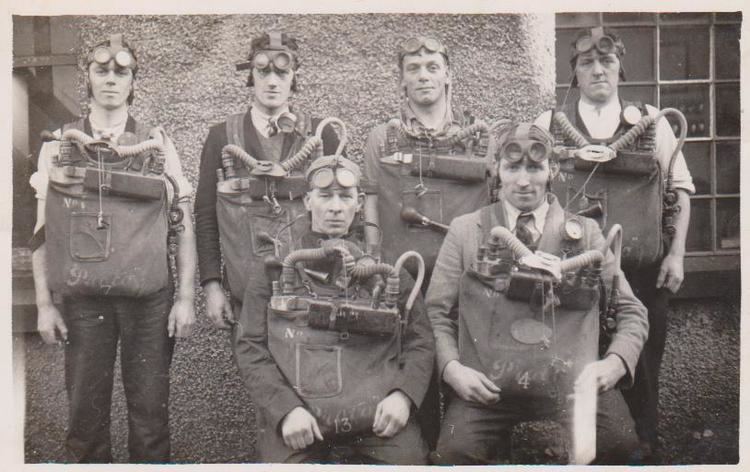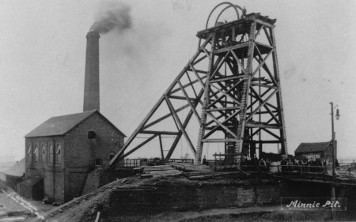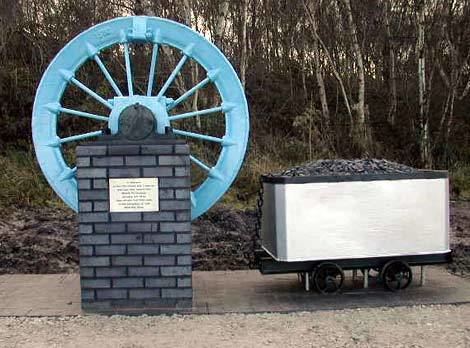Date 12 January 1918 | Number of deaths 155 | |
 | ||
Verdict underground explosion (exact cause not determined) Similar Senghenydd colliery disaster, Pretoria Pit disaster, Hartley Colliery disaster, West Stanley Pit disaster, Oaks explosion | ||
The Minnie Pit disaster was a coal mining accident that took place on 12 January 1918 in Halmer End, Staffordshire, in which 155 men and boys died. The disaster, which was caused by an explosion due to firedamp, is the worst ever recorded in the North Staffordshire Coalfield. An official investigation never established what caused the ignition of flammable gases in the pit.
Contents

Background

Minnie Pit, which was named after Minnie Craig, the daughter of one of the owners, a Mr. W.Y. Craig, was opened in 1881 in the small village of Halmer End, Newcastle under Lyme. At 359 yd (328 m) deep, it had been one of the most profitable pits in the North Staffordshire coalfields because it mined five seams of thick, good quality coal. It was the downcast shaft for the Podmore Hall Colliery, part of a wider industrial business that mined coal at the Burley Pit - the principal winding pit - on the Podmore Hall site, near Apedale. The business also included an ironworks, forge and coking ovens at Apedale. In 1890, the entire combine was formed into the Midland Coal, Coke and Iron Company, Ltd. and apart from mining and iron making, the combine company had its own mineral railway, the Apedale and Podmore Hall Railway.

Despite its profitability, Minnie was a dangerous pit because it had firedamp. Two other explosions had already happened before the 1918 disaster. A blast killed all the pit ponies but no miners on 6 February 1898. Nine miners - including the colliery engineer, a Mr. John White - were killed by an explosion on 17 January 1915. As both explosions had happened on Sundays, it had resulted in a relatively low loss of life. The prevalence of firedamp affected all the Podmore Hall Combine collieries. It caused a number of explosion at the Burley Pit: 23 killed, 23 March 1878; 9 killed June 1878; 10 killed, 2 April 1891.
Explosion

On Saturday, 12 January 1918, 248 men were working underground when a huge explosion tore apart the Bullhurst and Banbury Seams. Within minutes 155 men died from the effects of the explosion, roof falls or inhaling poisonous gases. Rescue teams from across the North Staffordshire Coalfield were quickly mobilised to search for survivors. But during the rescue attempts, Hugh Doorbar, Captain of the Birchenwood Colliery No. 1 rescue team,was killed in the operation. His death brought the final death toll to 156.

The explosions caused severe damage to the underground workings. Large sections of the pit had collapsed and methane remained an ongoing problem. Search and recovery teams were at all times aware that further roof falls or explosions might occur. It took 12 months to recover all the bodies from the pit.
Investigation

A formal investigation of the causes and circumstances of the disaster was launched under section 83 of the Coal Mines Act 1911. It was headed by William Walker CBE, acting Chief of His Majesty's Inspector of Mines, (father of future Chief inspector of Mines Sir Henry Walker).
The inquiry opened at Kings Hall, Stoke in December 1919. The jury returned the following verdict, after hearing witness evidence from 40 persons, viz:
In summary, the jury concluded that no blame could be apportioned to any one individual but regulations should be issued for the treatment of coal dust. This was recommended because it was thought that the wholesale devastation of the mine was propagated by an abundance of dust.
Aftermath
The disaster placed a huge strain on the mining community at Halmerend and its neighbouring villages because their livelihoods depended on the colliery and it related industries. With the First World War entering its fourth year, many families had now lost men at home on the Western Front. The Miners Federation Of Great Britain established a relief fund, 6s and 3d a week were collected from miners and boys at other pits around the country. Financial assistance came from other relief efforts. The Podmore company paid out compensation to bereaved families. Nevertheless many families were forced into poverty due to loss of their main wage earners.
In April 1930, the Minnie Pit along with the Podmore Hall Colliery closed at the start of the Great Depression. The company also shut down its foundry, railway and iron-making plant. Thousands lost their jobs sinking the area into a serious economic slump.
Legacy
In the early 1980s the National Coal Board and the local council erected a memorial to the disaster. The inscription reads:
"To the memory of those who lost their lives in the fight to extract coal from this mine, Minnie Pit, Halmerend, 1890-1931."Bible
A miner named Samuel Richardson - a prominent member of the local Methodist Chapel - perished in the disaster with his bible by his side. When his body was recovered, the book was returned to his wife. She then gave it to his best friend. In 1921, during the nationwide industrial action (known as the Miners' Crisis) the bible was to be sold in London to provide relief for the striking miners. The news of the sale came to the attention of Samuel Richardson's son who bought the Bible back for one Guinea. The Bible is believed to be in the care of the descendants of Samuel Richardson.
